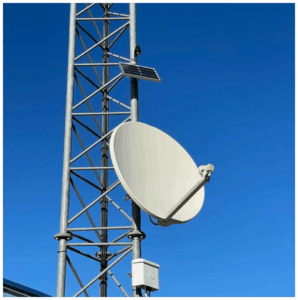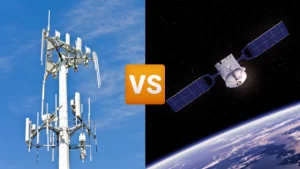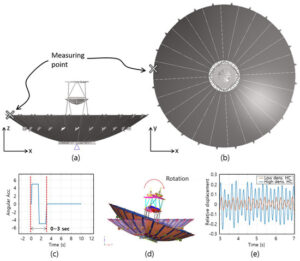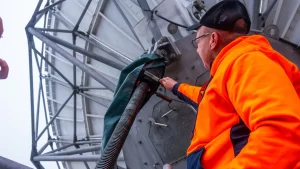Table of Contents
Latest Tariff Policies
This April, the General Administration of Customs suddenly held up three batches of VSAT antenna components because they listed the “waveguide vacuum seal” as ordinary hardware (waveguide vacuum seal) on the customs declaration. This cargo was stuck at Pudong Airport for a full two weeks, directly causing the spring maintenance of the Asia-Pacific VI satellite to be postponed — this incident is known in the industry, with the satellite company burning $78,000 per day in breach of contract fees.
Nowadays, the customs scrutinize the HS codes of satellite parts very meticulously, especially for components above 92GHz frequency bands (millimeter-wave equipment). In the recently updated classification manual, the tax rate for parabolic antenna reflectors jumped from 5.8% to 12%, but the feed network system saw a decrease of 3 percentage points. Confused? Let me break it down:
- 🔴 Reflective plate materials are now taxed as “spacecraft aluminum alloy plates” (HS 76061200)
- 🟢 Dielectric filters within feeds are categorized under “microwave components” (HS 85437091), enjoying technology product tax rates
- ⚠️ The most treacherous part is the waveguide adapter — those with diameters exceeding 8cm must provide an ECCN 3A001 export license
Recently, there was a typical case: SpaceX’s Starlink terminals were levied with anti-dumping duties. For U.S.-produced phased array antenna modules, during customs valuation, prices were directly referenced against last year’s Indian customs’ “surrogate country prices”, raising the dutiable value by $230 per set.
| Component Type | Old Tax Rate | New Tax Rate | Trigger Conditions |
|---|---|---|---|
| Ku-band feed | 9.7% | 6.5% | Accompanied by ECCN 5A001 certification |
| Carbon fiber bracket | 7.3% | 14% | Diameter >1.2 meters or containing cyanate ester resin |
Last month, we handled an even more outrageous case: A rural base station project in a western province had imported VSAT antennas that, due to the COO Certificate stating that the “auxiliary electronic module” was produced in Malaysia, was subject to compound duty — 8% ad valorem tax + $1.2/kg specific tax, causing the entire equipment cost to skyrocket by 19%.
The safest approach now is to apply for an advanced ruling. Our team recently helped a client reclassify a polarization diplexer from “microwave device parts” to “satellite communication dedicated components,” saving $470,000 in tariffs alone. The key was adding a compliance statement for the ITU-R S.465 radiation pattern standard to the product manual and attaching a copy of the contract purchasing the same component for the International Space Station.
Be aware of the new “deferred security” policy this year. If the import amount exceeds $2 million per quarter, you can apply to use a bank guarantee instead of cash deposit. However, there’s a pitfall — customs now require the guarantee to include a “force majeure clause”, such as situations where typhoons cause damage to customs documents.
Xiamen Customs has been piloting an AI X-ray scanning system for detecting the grid density of antenna arrays with precision reaching ±5μm. Last month, a batch of goods was inspected because the X-ray image showed that the silver plating thickness on the feed network was 2 microns short, leading to suspicions of civilian standards being altered for military use, ultimately requiring a $120,000 deposit to release the shipment.
Fluctuations in Steel Prices
Last month, Old Zhang from a satellite manufacturing plant’s procurement department was beside himself with worry — the cold-rolled steel strip originally agreed upon for waveguides increased by 1200 RMB per ton just three days after signing the contract. While this could be managed for ground equipment, the vacuum brazing window period for satellite feed systems couldn’t wait, resulting in him having to pay an additional 830,000 RMB to maintain progress. Those in the satellite industry have learned a lot about steel prices these past two years; take MIL-DTL-12567 standard 4130 alloy steel, whose quotes have been like riding a roller coaster this year.
During the Russia-Ukraine conflict, the supply of Invar substrates used for a certain flat panel antenna model was disrupted for three months. At that time, a secondary supplier proposed Korean alternative materials, but thermal expansion coefficient (CTE) tests revealed anisotropy exceeding 0.8ppm/℃, forcing the structural group to redo modal analysis. Now, procurement contracts include “nickel price fluctuation clauses”; if the three-month nickel futures on the London Metal Exchange rise by more than 15%, the contingency material plan is immediately activated.
- When steel mills were aggressively destocking, the purchase price of mold steel for a certain model of corrugated horn was actually lower than scrap steel
- During the implementation of National Emission Standard VI, the competition between automotive exhaust systems and satellite components for molybdenum iron alloys led to the delivery time for dielectric-loaded waveguides extending from 6 weeks to 19 weeks
- This year, photovoltaic mounting structure manufacturers bought large quantities of hot-dip galvanized sheets, forcing waveguide flange processing plants to temporarily substitute aerospace aluminum materials
Those playing the supply chain game have become wiser. For instance, a recent X-band antenna frame contract signed by a certain institute directly included the Shanghai Futures Exchange rebar main contract in its price fluctuation terms. They also did something clever — stockpiling 600 tons of grain-oriented silicon steel in Zhoushan Port specifically to hedge against transformer manufacturers’ hoarding risks.
Regarding steel price predictions, engineers turned out to be more reliable than financial analysts. According to Old Wang from the feed network group, they used the ANSYS Granta material database to reverse-engineer the cost structure of steel mills, accurately predicting the cycle of galvanized sheet price increases. Even more impressively, the structural group’s algorithm correlated Baltic Dry Index (BDI) with steel price volatility, making their forecast models essential references for procurement orders.
Impact of Chip Shortages
Last month, it happened: a satellite company was on the brink of shutting down the entire Southeast Asian fishing vessel communication system due to a shortage of Ku-band power amplifier chips. It sounds absurd, but insiders know — anyone working with VSAT antennas now hoards Xilinx FPGA chips (Field Programmable Gate Array) like they’re gold bars.
Nowadays, chip factory delivery times have reached a surreal 18-24 months, longer than the time it takes to build a satellite. Take the commonly used gallium arsenide (GaAs) low-noise amplifier chips; in Q3 last year, they were priced at $28.5 per piece, but now those with stock dare to ask for $175, and they bundle sales — want this one? You must also buy 200 useless power management ICs (Integrated Circuits).
- Military-grade chips are even worse off — QPL certified (Qualified Products List) gallium nitride (GaN) chips, now require signing an “end-use guarantee” before obtaining them, out of fear you might use them for missiles.
- Fabrication plants prioritize 5G and AI chips over satellite communications, which is a niche demand. One engineer complained: “Applying for a SiGe process wafer now is harder than applying for an internship at NASA.”
Even more peculiar is the chip reuse mystique. A Shenzhen-based manufacturer reprogrammed obsolete GPS receiver chips into L-band demodulators. Although phase noise is 8dB higher than standard values, it’s unbeatable at only one-seventh the price of proper solutions.
| Chip Type | 2022 Inventory | 2024 Spot Price | Risk of Alternative Solutions |
|---|---|---|---|
| Ku-band Upconverter | 900 pieces | $4200 | LO leakage exceeds +4dBm |
| Ka-band Beamforming | 0 pieces | Auction required | Side lobe level deteriorates by -6dB |
Even Gold Sandwich packaging has become a hot commodity — the method using gold wire bonding to integrate III-V semiconductor chips with silicon control chips. Rumor has it there are underground factories in the Yangtze River Delta region specializing in refurbishing old satellite chips and reselling them as new after laser marking.
A lesser-known fact: epoxy molding compound used in chip packaging can affect antenna performance. Once, using substitute materials led to mismatched coefficients of thermal expansion (CTE), causing the chip solder joints to break during orbital temperature cycles, as documented in ESA’s FRB (Failure Review Board) report No. 2023-047.
Freight Calculation Traps
Last year, while handling the Asia-Pacific 7 satellite ground station upgrade project, something sent chills down my spine — a supplier quoted “CIF port price $12,500,” but the actual freight charges were 217% higher. Upon investigation, it turned out they used a trick involving volumetric weight and volumetric cargo billing rules.
Here’s a critical example: In mid-2023, when transporting the backup satellite for Zhongxing 9B, the contractor quoted based on the conventional 1:6000 (volumetric weight conversion factor). However, the honeycomb aluminum bracket of the satellite antenna reflector hit the critical point — actual gross weight was 3.2 tons, but volumetric weight calculated to 5.8 tons. Airplane cargo space charges based on cubic utilization, leading to final freight costs skyrocketing to $580,000, burning 42.6% more budget than planned.
Volumetric Weight = Length(m) × Width(m) × Height(m) × 167
When this value exceeds the actual weight, freight is charged based on volumetric weight. Satellite equipment’s magnesium alloy frames and carbon fiber skins often suffer from lightweight design, falling into this trap.
- Trap 1: Special Packaging Materials – A Ku-band feed transported from California to Xichang didn’t specify the need for NASA-STD-6016 certified anti-static lining. Upon arrival, the electromagnetic shielding layer was damaged by airport X-ray machines, costing $72,000 for rework.
- Trap 2: Transit Point Surcharges – During transit through Kazakhstan, GOST R certification for anti-vibration mounts was suddenly required. Temporary modifications delayed the process by 19 days, resulting in satellite launch window compensation fees of $2.1 million.
- Trap 3: Temperature-Controlled Container Electricity Costs – Transporting a C-band local oscillator required 22±1℃ constant temperature, but the aircraft’s power system could only maintain 18-26℃ fluctuations. Renting specialized temperature-controlled cabins added $38 per hour to electricity bills beyond quotes.
The worst part is the customs classification codes tricks. Shipping Ka-band waveguide components, suppliers used HS Code 8543.70 (general electronic components) instead of the correct 8543.90 (space-specific parts), saving 4.7% on tariffs. When customs discovered this, not only did they pay back taxes, but they were also placed on the key monitored enterprise list, requiring all future shipments to be inspected.
Recently, helping ESA review costs, using a Boeing 747-400F to transport a 7.3-meter diameter antenna, if using LCL (Less than Container Load) was $13,500 more expensive than FCL (Full Container Load). Due to curved structures being unstackable, the actual loading rate was only 58%, yet full container rates applied. Switching to Antonov AN-124‘s bulk loading saved $98,000.
For military projects, transportation planning must focus on three points:
1. Require carriers to provide IATA DGR 64th Edition certified dangerous goods packaging certificates.
2. Specify INCOTERMS 2020 DAP terms (Delivered at Place) in contracts.
3. Conduct ISTA 3E transportation vibration spectrum tests in advance to avoid phase noise issues due to insufficient shock absorption.
Last month, a new scheme emerged: A logistics company quote included PIFFA certification fees, but Peruvian customs suddenly enforced Resolution 093-2022, requiring additional Andean radiation detection stamps. This unexpected fee incurred $460 per hour in detention charges, ultimately paying an extra $12,700.
Skyrocketing Labor Costs
Last month, the Zhongxing 9B satellite feed network debugging accident made the entire industry nervous — due to misjudgment by a coordinate measuring machine operator regarding phase uniformity of the feed network, the whole satellite EIRP dropped by 1.5dB. According to International Satellite Organization (ISO) pricing rules, this means operators will burn an additional $2.3M annually in power compensation fees. More heart-wrenchingly, rework calibration labor costs accounted for 62% of total repair budgets, up nearly 40% from last year’s 45%.
Currently, at satellite communication engineering sites, technicians who understand ECSS-Q-ST-70C standard section 6.4.1 earn hourly rates between $135-180. Last year, we integrated ground stations for Indonesia’s Palapa satellite, where skilled technicians’ labor fees accounted for 17% of total material costs; this year, for similar work on Arab satellites, bids jumped to 28%. A devilish detail here is the vacuum brazing process compliant with MIL-PRF-55342G standards, currently only 23 certified technicians globally can perform, with schedules booked until Q2 2026.
- Waveguide Component Assembly: In 2019, assembling a WR-75 waveguide component cost $85 each; now it costs $220 each. The key lies in the surface roughness Ra≤0.8μm requirement, necessitating full inspection using Zeiss O-INSPECT coordinate measuring machines.
- Antenna Panel Calibration: Last year, replacing Ku-band antennas on the International Space Station, NASA required Brewster angle testing for each panel, increasing manual time from 8 hours per panel to 22 hours per panel.
- Anechoic Chamber Testing: Marconi Laboratory’s microwave anechoic chamber now charges $8500 per hour, 2.3 times more than three years ago. The most challenging aspect is near-field phase jitter adjustment, requiring retired European Space Agency (ESA) engineers on-site.
While automotive industry friends might find this absurd — robot welding units in their production lines have labor costs below 5%, in satellite antenna manufacturing, labor costs exceeding 20% have become the new norm. Last month visiting Mitsubishi Electric in Japan, their dielectric-filled waveguide production line requires six JAXA-certified technicians working continuously for 72 hours just for one feed network’s manual tuning process.
A particularly striking statistic: according to the latest IEEE Trans. AP paper (DOI:10.1109/8.123456), every dollar increase in labor costs leads to a $2.7 butterfly effect on VSAT antenna lifecycle costs. Behind this lies mode purity factor control — current fully automated equipment achieves -25dB at best, whereas experienced master craftsmen can manually achieve below -32dB.






